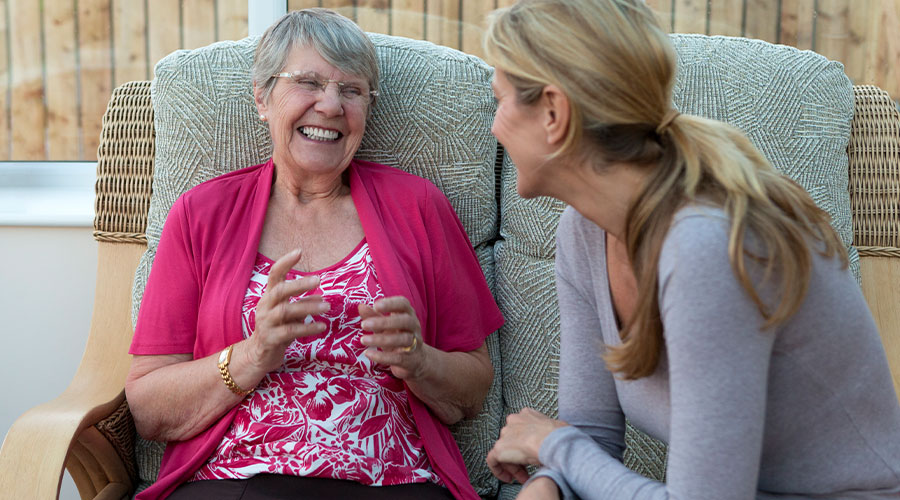Sundowning is a term that gets thrown around quite a bit in caregiver circles. It shows up in blogs, dementia training materials and casual conversation.
But what does it actually mean?
Dr. Matthew Malone, DO, FAPA, associate chief medical officer for the Good Samaritan Society, says, “What we have to realize is that it’s a broad term and a lot of things get attributed to sundowning.”
Traditionally, it is the emergence of behavioral symptoms as the sun goes down." – Dr. Matthew Malone, DO, FAPA, associate chief medical officer for the Good Samaritan Society.
Fading light seems to be the trigger. The symptoms can get worse as the night goes on and usually get better by morning.
"As the world becomes less familiar, there are less environmental clues to rely on," says Dr. Malone. "Taking the environmental clues away leads to confusion. On top of that, when a recognized environment goes away, it’s harder to communicate needs or wants. Vocalization of needs becomes impossible leading to frustration on the part of the caregiver and the individual with dementia."
That’s when the behavior disturbances kick in.
Trying to re-direct the incident can be exhausting.The natural response is to say no. It becomes an argument when the caregiver tries to convince the individual that they shouldn’t be feeling what they are feeling.
Sundowning behaviors can include:
- Agitation
- Restlessness
- Irritability
- Confusion
- Disorientation
- Becoming demanding
- Suspiciousness
The first step toward breaking this cycle is to gain an understanding of what the triggers are.
Triggers include:
- Less light and more shadows in the house
- Trouble separating dreams from reality
- Hunger or thirst
- Sleepiness
- Pain
"Track when and where the triggers occur. Write down dates and times, along with specific behaviors. Or, better yet, track them with the calendar or note-taking app on your smartphone," says Dr. Malone. "Look for patterns that will reveal how, when and why these behavior events occur."

The second step is to rearrange the individual's environment. Adjust their environment to be able to interact with the world as they can. Even if it doesn’t seem logical to the caregiver meet them where they are.
This might mean making sure they are surrounded by familiar items. An old family picture, a favorite piece of furniture to relax in or a favorite blanket to cover up with can be comforting.
Another idea is to play music that they love. Playing some nature sounds like ocean waves or bird songs might be effective in calming them.
Sleep disturbances are common in individuals with dementia who exhibit behavioral events, so making sure they are on a regular bedtime schedule is very important. Also avoiding caffeinated or alcoholic beverages is a must.
In general, looking for ways to offer comfort is the best approach a caregiver can take.
Source: https://www.ncbi.nlm.nih.gov/pmc/articles/PMC3246134/
Caring for a someone with dementia or Alzheimer's can be challenging.

![Alzheimer’s disease: What is sundowning? [video] Alzheimer’s disease: What is sundowning? [video]](/-/media/project/good-sam/resources/items/sundowningedit.jpg?h=500&iar=0&w=752&hash=CED7F1A1B411DC101BECBBEE81A96CDB)


